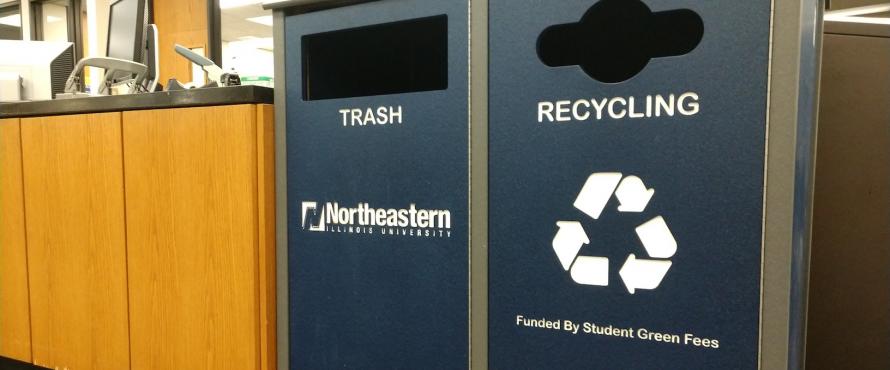To date, the Green Fee Committee has completed more than 50 projects including:
SOLAR WATER HEATING SYSTEM
Solar panels were installed in 2013 atop the Physical Education Building to heat its swimming pool, allowing Northeastern to reduce its dependence on fossil fuels and reduce its natural gas bills.
ELECTRIC VEHICLE CHARGING STATIONS
There are electric vehicle charging stations at El Centro and on Main Campus to promote the adoption of pollution-free electric cars.
WATER BOTTLE FILLING STATIONS
New water fountains with bottle-filling stations that dispense filtered water have been installed around the University since 2013 to reduce plastic bottle waste as well as energy and resource consumption.
SOLAR PV PANELS
Introduced by President Sharon Hahs on Earth Day 2012, these photovoltaic panels on Building B convert the sun’s energy into electricity and reduce Northeastern’s reliance on polluting energy sources. A TV monitor in a highly trafficked part of the building shows visitors its real-time and cumulative power savings. To see how much energy is collected, visit Tigo Energy. (Login: NEIU visitor Password: guest). Solar panels have also been added to CCICS and El Centro.
PLANTING OF TREES AND GREENERY
Native trees and plants benefit local wildlife as well as cut down on air pollution, recharge ground water and reduce runoff that contributes to water pollution and flooding. These aesthetic improvements also contribute to biodiversity. Native vegetation has been planted on the north side of the Ronald Williams Library and adjacent to Parking Lot J. Planters have also been installed at CCICS.
ENERGY-SAVING LED LIGHTS AND MOTION SENSORS
Efficient bulbs and sensors that switch off lighting when not in use save electricity and the need for maintenance with longer-lasting bulbs.
ELECTRIC MAINTENANCE VEHICLE
Replacing a pickup truck, this battery-powered vehicle, which is primarily used by Facilities Management, cuts down on greenhouse emissions and noise pollution. There is also a battery-powered car used by Campus Parking.
BIKE RACKS
By adding more bike racks on the main campus, the University increases the potential for bicycle commuting to ease driving and traffic congestion.
RECYCLING BINS
Receptacles located throughout the University are some of the most visible displays of sustainability. They encourage the community to think about waste disposal and how it contributes to growing landfills.
BIRD-SAFE WINDOWS
Bird-shaped stickers adorn select windows to prevent bird mortality.








